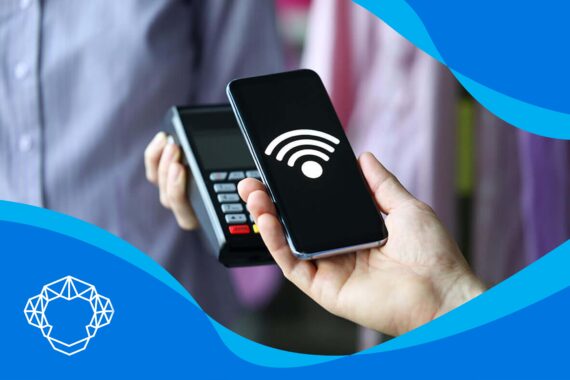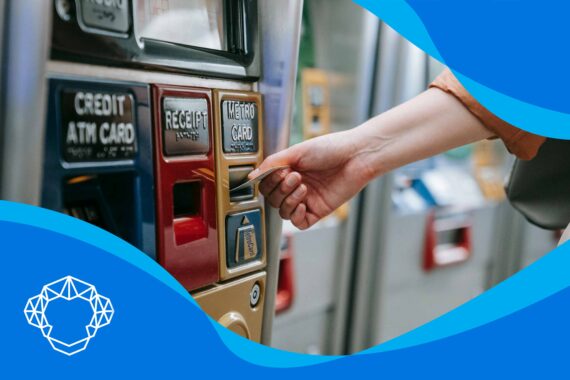Shoppers have had an opportunity to choose their market for decades now, and they can purchase goods and services physically in a store or through the internet. But what are the differences between online shopping vs. traditional shopping, and the pros and cons of both for a merchant?
Even today, when e-commerce payment options have taken the world by storm, many buyers still like to visit a store in person to browse and touch the goods firsthand. According to Think With Google, there are still around 61% of buyers who would more likely shop from brands that have brick and mortar locations. But whether online buying and selling prevail in any way over the traditional method remains to be seen. And we’ll analyze the pros and cons each brings to an enterprise.
The Similarities of Online Shopping vs. Traditional Shopping
Whether you’re a future merchant looking for small business ideas or you have a running enterprise with a need to expand it, getting involved with a merchant processing company and implementing e-commerce is the right path to go. But which is better? Customers have different needs and wants and different preferences when acquiring products and services. Understanding the similarities between the two types of shopping and noting their differences will set you off on the right path to increasing revenue and gaining a regular customer base.
Each Requires a Merchant to Provide Good Customer Service and a Quick Reply
Good customer service is one thing different types of businesses have in common. While it may suffice to say that treating customers with at least some basic respect is non-negotiable, the same applies to e-commerce stores. In the case of online stores, this means regular and polite answering messages and emails and being available for phone calls during the shift. Providing a good and reliable service to consumers will help you gain trust and build a solid base of regulars.
Both Types of Customers Are Equal – They All Like a Good Sale
Admittedly, we all love good sales and getting stuff at a discount, and offering them in our store is one of the best recipes for drawing new shoppers. If it’s an on-location sale, you can offer a cash discount program for each customer deciding between credit card and cash payments. Seasonal and holiday sales should be a regular offer, while you can add some flash sales in between. Additionally, when making a holiday or seasonal sale, mark all of the items that fall into this category, and offer 10, 15, or 20% off.
The same goes for online shoppers – they are drawn by all types of sales. You can reach out to them through your email list or promotional posts on various social media. Another great option is to offer coupon codes and additionally provide the shoppers with free shipping during the promo period.
No One Loves to Pay Shipping Fees
One of the perks that people see when it comes to on-location purchasing is the absence of shipping fees. Whatever a customer buys, they take with them right away. Online shops are a different thing, though. You, as a merchant, are obliged to pay for different costs related to your enterprise (and these may include merchant services rates through a credit card processing company and definitely a credit card convenience fee).
On the other hand, your customers are never thrilled about paying for fees such as shipping. However, not every enterprise can afford to offer it for free, and shoppers don’t expect each and every store to have it. But as we’re mentioned, with discounts, a store may draw the attention of potential buyers through occasional offers of free shipping.

Traditional or In-Store Purchasing
When we speak about buying items and services, what we usually refer to is purchasing them on location. Visiting stores and browsing through the products is the main advantage for customers. They like to try out and see the item before they make a payment through the best credit card processing for small businesses or with cash. The other advantage is that they can take the purchased item home right away instead of waiting for it to be shipped. This option is usually chosen in case of daily essentials, like groceries, toiletries, and such.
Pros vs. Cons of On-Location Shopping
Besides having the opportunity to feel and touch the product, the other pro is that a customer has a chance to try out some of the goods on the spot. While some people disregard the importance of communication with the staff or other buyers, face-to-face interactions are an important part of purchasing. A buyer has an opportunity to get informed on the items in question face to face. Additionally, it’s easier to return the product you’re not happy with. For merchants, it’s a perfectly convenient time to understand the various needs of customers, get friendly with them and gain them over with professionalism.
Perhaps the biggest disadvantage of on-location purchasing is that it is time-consuming for buyers, while getting to and from the place may cause a customer to lose money. They can also visit a shop only at certain hours and not each day of the week. Comparing the prices and products isn’t easy, as theyd have to visit several of the most successful small businesses around and still miss out on some special offers. And in the end, the stores don’t usually hold a vast range of different goods. In the case of merchants, a brick and mortar is unneeded when you’re starting a dropshipping business. Additionally, a store will cost you more than running a website.

Essential Understanding of E-commerce
When a customer orders and pays for a good or service over the internet, it’s considered as online purchasing or as one of the e-commerce business models. Apart from the fact that most of us still visit brick-and-mortar shops in order to buy essentials on the spot, many consumers consider purchasing through a payment gateway the ultimately convenient form of buying goods and services. Additionally, some companies only offer services and goods available in digital form, which are purchased via a recurring payment, such as Netflix, Amazon Prime, and similar streaming services.
Most Consumers Agree That the Pros Are A-Plenty and Love the Experience
So let’s talk about the most obvious pro of e-commerce – there are no geographical restrictions on where consumers get to buy things. The offer that you as an enterprise can present on the internet marketplaces and stores are vast, and consumers even get the possibility to buy second-hand products at a much more affordable price from you. Comparing and searching for items and prices that fit the budget is made easy for them. There is no time of day or the week in which the buyer is restricted from purchasing a good or service.
It’s also simple for enterprises using credit card processing services and e-commerce to get to consumers with special offers via email or other forms of online advertising. Studies show that up to 51% of smartphone users are prone to use a merchant’s app when browsing or purchasing on a smartphone because they are offered rewards and points. There’s also the convenience of digital wallets such as Apple Pay, which consumers can use when buying on the internet.
One of the Cons Is That Buyers May Leave Their Shopping Cart
There are, however, some disadvantages both for consumers and for the merchants. Starting with the fact that a customer doesn’t have the opportunity to physically check out the product, they may receive something a bit different from the advertisement. Not only does a small business pay taxes for implementing an e-commerce option, but a consumer may be subject to the same taxation for purchasing on the internet. The delivery of products takes time, and fees are usually included.
Additionally, one of the mistakes business owners make is forgetting to do everything in their power concerning credit card fraud prevention, so there’s a risk of online fraud. There’s one more inconvenience in regard to online sales – a shopper may more easily give up on an order and abandon the cart than they would do on location. This is sometimes due to a lack of face-to-face communication with the staff.

The Key Differences Between These Two Selling Options
While these two commerces are the same in the way that they allow a consumer to buy a good or a service, and for a merchant to offer it to them, they differentiate in several ways:
- The convenience is simply not the same with these two commerce options, and most people consider online buying a far more comfortable option that takes less time.
- The opportunity to try out and feel a product is only available in brick-and-mortar shops, and if it is important to the consumer, they will avoid internet shops. A product received after an online purchase may greatly differ from the one advertised on the website.
- The comparison of prices is usually very important to each consumer, but it may not be as easy to thoroughly compare them in brick and mortar locations. All the while, an online shopper may compare them with ease. And look for sweeter deals on needed goods in a matter of minutes.
- Some consider the safety of physical purchasing far greater than that on the internet because of the fraud threat. But if you are providing a secured website to a consumer, the possibility of fraud is brought down to a minimum, and you will gain trust of wider audiences.
- Changing minds about a product is a bit more complicated if a good is bought and sold on the internet. However, returning goods on location is pretty much easy.
- Communication is the key – as we’ve mentioned before, many consumers find that communication with the staff is needed, especially if they need advice regarding a purchase. The good service you provide is what may prevail in some situations, although internet buyers may get their information through online research.
In the end, the preferred choice of customers is to use both, depending on their needs and how immediately they want a product in their home, so keep in mind that you may offer both conveniences for purchasing the goods.
If you want some advice on how to shop safely, watch the following video.
Best Parts of Traditional Commerce vs. E-Commerce May Convince You to Offer Each Experience to Your Consumers
One thing’s for certain – if you’re looking for a way to expand your business and revenue and gain more clients, the best way to do it is to find a good merchant services credit card processing firm and apply for a merchant account. Most consumers look for shops that offer all types of selling and receive various forms of payment. You can contact us today, and we’ll go down into detail about what is a good effective rate for credit card processing and explain your merchant statement.
However, if you’re still not sure whether to decide to choose just e-commerce or open a traditional shop, keep in mind that up to 50% of people who browsed the information before purchasing also looked for details about the location or proximity of an enterprise.







